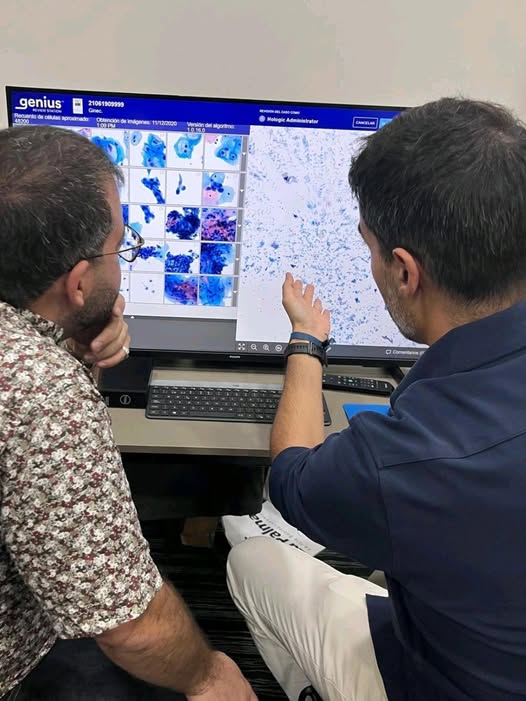n 2020, the mortality rate from cervical cancer in low- and lower-middle-income countries (LMICs) was estimated at 12.9 to 14.1 per 100,000 women, with Eastern African regions facing a higher rate of 28.6. Women with HIV, who make up 5% of all cervical cancer cases globally, have a sixfold increased risk. The WHO's strategy to eliminate cervical cancer includes the '90–70–90' targets by 2030: 90% Human Papillomavirus (HPV) vaccinated by age 15, 70% of women screened twice by age 45, and 90% of affected women receiving proper treatment. Achieving these targets in 78 LMICs could avert 74.1 million cases and 62.6 million deaths over a century.
Further research is needed to optimize cervical cancer screening strategies for women living with HIV, considering their significantly higher risk and the varying effectiveness of screening tests and pre-cancer treatments across different stages of HIV and levels of viral suppression.
About the study
In the present study, the researchers utilized the Policy1-Cervix-HIV platform, a deterministic transmission-dynamic compartment model. This model integrates a variety of factors, including sexual behavior, HIV and HPV infection, and their natural history, along with comprehensive demographic and sexual behavior assumptions. The focus of the study was on Tanzanian females born in 2005, specifically those who acquired HIV on or before the age of 25. These included primary visual inspection with acetic acid (VIA), primary cytology, and primary HPV screening. Both strategies with and without triage were considered, using methods like HPV 16/18 genotyping, colposcopy, cytology, or VIA.
The researchers assumed a baseline scenario using three-year intervals for primary VIA and cytology with other intervals of three, five, and ten years for primary HPV screening. Performance metrics of screenings and triage tests were obtained from the most recent updated systematic review evidence. The main hypothesis of the research was that 70 percent of women would participate in each routine examination session while 90 were willing to attend follow-up visits or treatment appointments. In this study, the endpoints considered were reduction in cancer incidence and cancer mortality, number needed to treat (NNT) as well as preterm deliveries directly due to pre-cancer treatment.
Study results
The study presented comprehensive results on the impact of various cervical cancer screening and triage strategies in a simulated cohort of Tanzanian women living with HIV. Initially, the study set a baseline scenario where, without any screening, the age-standardized incidence rates (ASIRs) and age-standardized mortality rates (ASMRs) for cervical cancer were predicted to be 104 and 100 per 100,000, respectively. This translated into an estimated 5,263 cervical cancer cases and 4,469 deaths over the lifetime of the cohort.
In the base case scenario, primary HPV testing without triage every three years for women aged 25–50 years showed a significant impact, reducing the ASIR of cervical cancer by 64%. Conversely, when HPV-positive women were prioritized before treatment, the reduction in cervical cancer ASIR ranged from 57% to 62%, depending on the triaging technology used. The study also compared primary cytology with HPV triage and primary VIA testing, both offered every three years. These methods could reduce cervical cancer ASIR by 55% and 51%, respectively.
The study further explored the efficacy of primary HPV screening at five-year intervals for women aged 25–50 years. Without triage, this approach was predicted to reduce cervical cancer ASIR by 59%, slightly less effective than the three-year interval strategy. When HPV testing every five years was combined with triage methods like 16/18 genotyping, cytology, VIA, or colposcopy, the reduction in cervical cancer ASIR was 4.4 to 4.8 percentage points lower than the equivalent strategy with a three-year interval.
The balance of benefits and harms was also assessed. Primary HPV screening without triage every three years for women aged 25–50 years was predicted to lead to 116,298 pre-cancer treatments and 426 additional preterm delivery events. The NNT for this strategy was calculated at 38.7. In contrast, primary HPV screening with various triaging methods such as VIA, HPV 16/18 genotyping, or cytology showed different outcomes in terms of benefits and harms, including the number of pre-cancer treatments and associated preterm deliveries.
These findings were crucial in evaluating the effectiveness of the different screening and triage strategies in reducing cervical cancer incidence and mortality, as well as in understanding the balance between the benefits and harms of these interventions in the context of women living with HIV in Tanzania.


